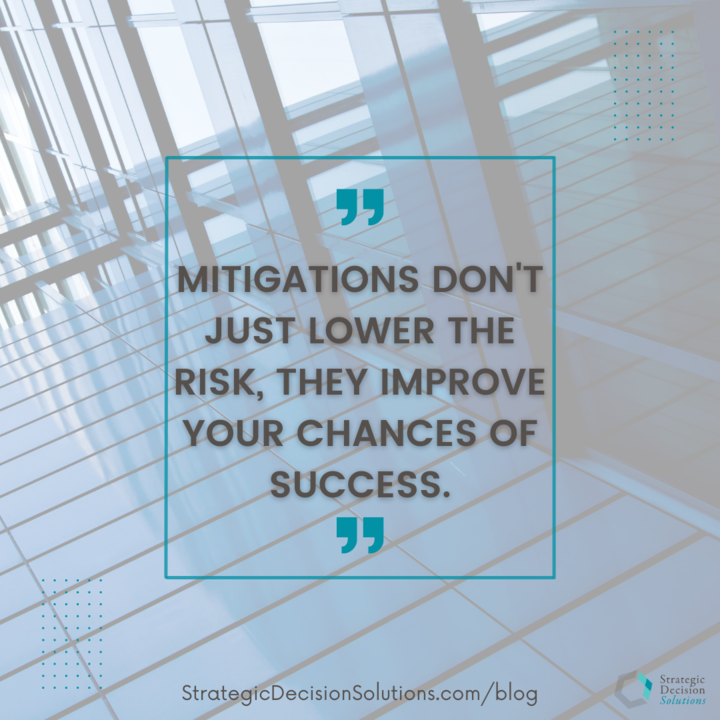“When life gives you lemons, turn them into lemonade.”
This phrase originally coined by Christian writer Elbert Hubbard is meant to encourage a can-do attitude in the face of adversity.
As a company, adversity or risks to strategic objectives are going to be a fact of life. After all, it would be the height of naivety to think goals will be met without any adversity or resistance in the form of risks.
But just because there are “risks” to achieving objectives doesn’t mean you have to throw your hands up in despair.
Like turning lemons into lemonade, instead of just accepting the risk and working around it as best as you can, see if there are ways to transform them into opportunities.
I know what you’re thinking – what does this mean and how do I make it happen?
Today’s article is the second in our series on identifying opportunities. Our first piece exploring the low-hanging fruit of identifying opportunities discussed how a company can evaluate its risks to see which ones it is over-managing and thus redirect resources.
The risks I refer to there are operational in nature, but for today, the focus turns to strategic risk(s), and in a big picture sense, is about harmonizing operational, enterprise, and strategic risk management.
As I’ve discussed before, robust ERM is about more than just managing the downside, even in extenuating circumstances like the COVID pandemic. Numerous other thought leaders frequently explain how enabling success is just as important of a function for ERM as identifying risks, reporting risks, or otherwise preventing failure.
When writing her contribution to the book Enterprise Risk Management – Today’s Leading Research and Best Practices for Tomorrow’s Executives, President and Founder of Risk Wise, Inc. Diana Del Bel Belluz explains how ERM programs are considered to be pretty effective at loss prevention, but that to play a more “value creation” or enhancement role, ERM must be “an enabler of risk action” as well. As Diana puts it:
ERM leaders need to recognize that opportunity and risk are two sides of the same coin.
When it comes to turning risk(s) to strategy into opportunities, it really boils down to mindset.
In some cases, you may think risk mitigations are only about protecting the downside when in reality you’re increasing the upside as well.
It’s not just about the mitigations themselves but the outcome of the mitigations.
When a risk is identified, it becomes an opportunity when the business says parenthetically “…we not only accept the risk to achieve our objectives, but this could also work to our benefit. Here is how we could take advantage of this situation or the potential for this to happen.”
Outcome is defined as “the way a thing turns out” or a “consequence”. Now if you are a parent, you know that a consequence is typically defined as something negative, but the reality is that a consequence is simply the result of an action – good or bad.
So let’s take a look at a couple examples and see how the outcome can change from the seeming negative consequence of a risk to the positive outcome of an opportunity.
Example #1: Competition Risk
If your company is wanting to move into a new product or target market, one risk that will always exist is competitors who could prevent you from achieving your desired market share. As part of understanding the risk, your company performs a market analysis. Upon presenting the market analysis results to leadership, they decide to make a potential key competitor an acquisition target.
This becomes an opportunity because, instead of expending a massive amount of effort and money to move into the new space, your company can just purchase the company that’s already there!
While I admit this won’t work in every situation, this is one way to address the risk of a competitor and turn it into an opportunity.
Example #2: Talent Retention Risk
To turn talent retention risk into an opportunity, a competitive study can be done to examine compensation among peer organizations. Next, you say “we’re going to revamp compensation and benefit packages. We’re going to do this, this, and this, change our compensation and so on.”
By doing so, this risk of inadequate compensation is turned into the opportunity to be innovative and therefore enables you to even improve employee engagement and possibly even improve organizational culture, which is something everyone can work on (because no organization has perfect culture!).
To get down to brass tasks – once you identify an objective and any risk(s), what are you going to do?
In the end, it all comes back full circle…
A lot of people don’t think of it this way though. They will just stop at “this is our mitigation, so it will improve the risk.” This is only taking things halfway though.
Keep in mind that the mitigations don’t just lower the risk, they improve your chances of success. Turning risks to strategy into opportunities is about seeing your company’s actions as more than just addressing or responding to a risk, but rather increasing chances of success.
This is the essence of how you turn risks to strategy into opportunities…
This is a neat concept I wish more people in ERM understood, but unfortunately, it’s understandable considering the amount of “risk-centric” books, articles, and webinars floating around out there.
However, by not understanding this, ERM will be left behind while strategy keeps moving forward. ERM will forever be seen as more of “check-the-box” activity and a roadblock to success that must be worked around rather than a valuable partner in strategy development and implementation.
As Diana explains in her essay mentioned earlier, ERM’s perceived value will wane over time if it remains in the “risk reporter” role that is typical when a program is first starting out. To move from this into a more active decision-making role, effort will need to be taken to see how turning risks to strategy into opportunities can be done for your organization.
Does your organization focus solely on lowering risk or do mitigations represent an opportunity to increase the odds of achieving objectives?
I personally find this sort of topic fascinating and am interested in hearing your thoughts as well, which I hope can prompt additional insights for everyone here. Simply join the conversation on LinkedIn if there is something you would like to add.
And last but not least, if your company is struggling to grow ERM beyond its initial focus on the downside and is interested in turning risks to strategy into opportunities, please don’t hesitate to contact me today to schedule some time to discuss your current state, where you want things to go, and how SDS can increase your chances at success.









